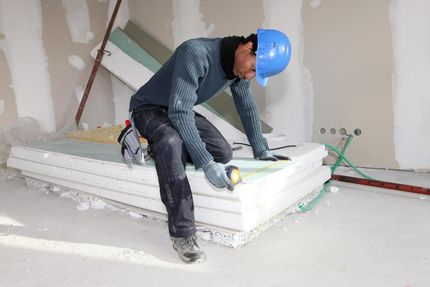Effective Drywall Repair Techniques to Restore Your Walls
Effective Drywall Repair Techniques to Restore Your Walls
Blog Article
Drywall Installment Facilitated: Tips for Perfect Results
Drywall installment is typically perceived as a complicated task, yet with the ideal approach and expertise, it can become a workable endeavor. Grasping methods for cutting, hanging, and finishing drywall can substantially impact the result.
Picking the Right Materials
Choosing the ideal materials for drywall setup is critical to achieving a long lasting and aesthetically pleasing finish. drywall contractor. The main part, drywall sheets, typically been available in numerous densities, with 1/2-inch sheets being basic for interior wall surfaces. For locations calling for additional moisture resistance, such as cooking areas or bathrooms, consider utilizing eco-friendly board or concrete board, which are particularly made to withstand humidity

In addition, picking the appropriate bolts-- either nails or screws-- is necessary for protecting the drywall to the framing. Drywall screws are typically favored for their holding power and reduced threat of standing out. Take into consideration the finishing touches such as guide and paint, which not only enhance the look however likewise protect the drywall from dampness and wear.
Preparing the Installment Area
Prior to beginning the drywall installment process, it is crucial to prepare the installation location thoroughly. A tidy work space lessens the threat of damage to existing products and allows for effective activity during setup.
Following, inspect the walls and ceiling for any kind of imperfections, such as fractures, openings, or mold. Address these problems ahead of time; patch any type of problems and allow adequate time for repair services to completely dry. Additionally, make sure that electrical outlets, switches, and plumbing are appropriately placed and accounted for, as this will affect drywall positioning.
Consider the environmental conditions also. A steady temperature and humidity level are important for optimal adhesion and performance of the drywall materials. If necessary, use a dehumidifier or heater to create suitable problems.
Cutting and Hanging Drywall
The key to efficient drywall installment depends on the specific cutting and hanging of the panels. Begin by gauging the area precisely, taking into consideration any blockages such as electric outlets or windows. Use a straight edge and an energy knife to score the drywall along your dimensions, after that snap it along the scored line for a tidy break. For more intricate cuts, such as around electrical outlets, a drywall saw can be made use of for precision.

Constantly work from the top down from this source and delegated right, ensuring that you preserve a staggered pattern to boost stability. Appropriately hanging the drywall establishes the foundation for a smooth surface, inevitably resulting in remarkable results in your drywall job.
Insulation and Mudding Strategies
While proper cutting and hanging of drywall establishes the phase, the next vital action involves grasping taping and mudding methods to make certain a seamless finish. Insulation is crucial for reinforcing joints and avoiding fractures; it entails installing tape into the applied joint compound (mud) Begin with a high quality fiberglass or paper tape, using the tape over the joint and pushing it right into the damp mud using a taping knife, guaranteeing no air bubbles stay.
When the tape remains in location, use a slim layer of joint substance over the tape, feathering the sides to develop a smooth transition to the drywall surface. Allow this layer to dry completely before sanding it lightly to remove imperfections. Repeat this process, applying additional coats of mud as necessary-- generally a couple of coats-- while progressively widening the application location with each layer to attain a smooth appearance.
After the last layer dries, sand the surface with a fine-grit sandpaper until smooth. drywall fort worth. Keep in mind to use a mask during sanding to avoid breathing in dirt bits. Grasping these taping and mudding methods is crucial for achieving a professional-quality finish in your drywall installment
Ending Up Touches for Excellence
Accomplishing a flawless drywall installation exceeds mudding and taping; it culminates in the finishing touches that boost the general appearance. These final actions are vital in guaranteeing a professional-grade finish that boosts the appearances of your area.
Begin by sanding the dried joint compound to develop a smooth surface. Make use of a fine-grit sandpaper and a fining sand block or pole sander for optimum control. Pay specific click to read more attention to edges and edges, as these locations tend to require more meticulous work. After sanding, wipe down the wall surfaces with a wet towel to remove any dust particles, making certain a tidy surface for paint.
Next, use a primer particularly made for drywall. This step is crucial, as it helps secure the joint substance and offers a consistent base for the overcoat. Once the primer dries out, inspect for any type of blemishes, and touch up as needed.
Verdict
To conclude, successful drywall installment pivots on the careful choice of products, thorough preparation of the setup location, and precise execution of cutting and hanging methods. Proficiency of taping and mudding procedures is important for accomplishing a smooth surface. In addition, focus to finishing touches, including priming and touch-ups, guarantees a professional-grade outcome. By sticking to these discover here standards, the top quality of handiwork can be significantly enhanced, adding to the general aesthetic and performance of the area.
Drywall installment is commonly regarded as an overwhelming job, yet with the appropriate technique and understanding, it can end up being a workable endeavor.Selecting the appropriate products for drywall setup is important to accomplishing a resilient and aesthetically pleasing coating.Prior to beginning the drywall installation procedure, it is crucial to prepare the setup area thoroughly. Understanding these taping and mudding methods is vital for achieving a professional-quality coating in your drywall setup.
In final thought, successful drywall installment hinges on the careful option of materials, comprehensive prep work of the setup area, and precise implementation of cutting and hanging techniques.
Report this page